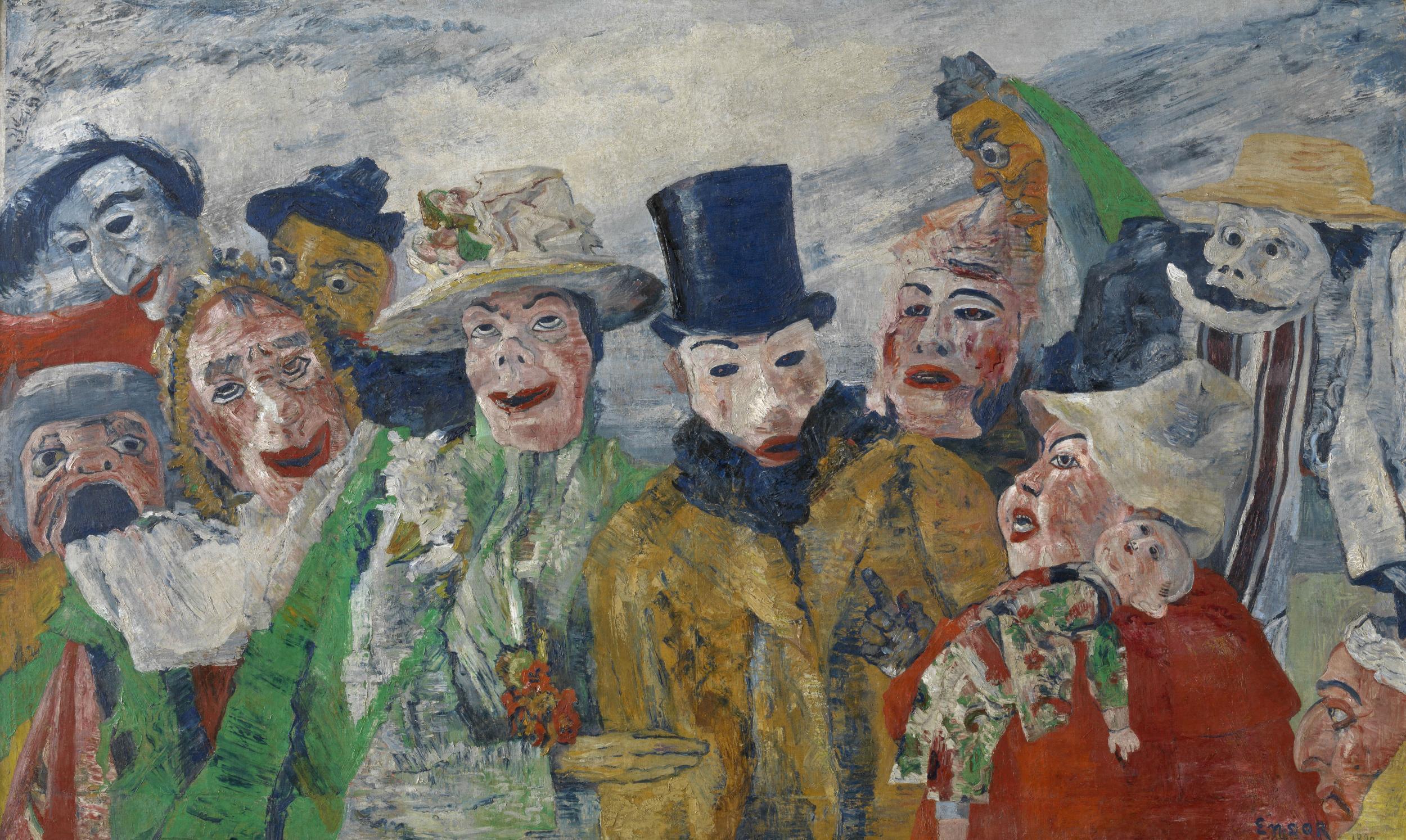Intrigue: James Ensor by Luc Tuymans, Royal Academy, London, review: I find it strange that the curator gets star billing
This exhibition presents an original body of work seen through the eyes of Belgian painter Luc Tuymans

James Ensor was born in the seaside town of Ostend, Belgium, in 1860 to a British father and a Belgium mother. His mother ran a curio shop that sold touristy tat, including masks to wear during the town’s annual festival. Ensor loved his father, who supported his son’s choice of career. But his art was inspired more by his mother’s shop where he spent many hours as a child surrounded by its “opulent colours, reflections and sparkling rays of light, [which] doubtlessly contributed to me becoming a painter in love with colour, delighted in the blinding glow of light”.
Ensor chose to study painting in Brussels but always returned to Ostend where he lived until his death, his studio in the top of his house revealing the roofs and sky of his beloved West Flanders town.
Ensor enjoyed critical success by his mid career but his stardom waned and his is far from a household name outside his native Belgium, with few works in British collections. It is sad because he is a gloriously inventive painter who rewards close scrutiny. Recently there have been a spate of shows claiming to be about an artist, only to turn out to include a few works of that named artist. But the Royal Academy has managed to obtain three major canvases by Ensor, along with a number of his intricate drawings and etchings, and Ensor was nothing if not a great draftsman. I find it strange that the curator, in this case Belgian painter Luc Tuymans, gets star billing in everything related to the exhibition. Looking at the cover of the lavish catalogue it is as if Tuymans has somehow made Ensor. It is sad that Tuymans could not resist putting his works in the middle of the exhibition, as they suffer by comparison. Perhaps Tuymans has more time to curate now that the market is not as strong as it was for his influential early work. Depressing, as Tuymans was such a force in painting at the peak of his career.
What thrills me most about Ensor is how unique his paintings are. I can point out influences including English artists JMW Turner, James Gillray and William Hogarth in his parodic approach, and the quasi-insane world of Dutch artist Hieronymous Bosch. While it is interesting to cite his potential influences, Ensor is his own man, imbuing layers of meaning into his works. The Skate (1892), a portrait of the flat fish, is not a conventional still life but loaded with many meanings including an overt eroticism. The large Theatre of Masks (1889) reveals layers and layers of meanings, with portraits and masks seemingly both receding and progressing. It is worth visiting the Royal Academy for these two paintings alone. I am sure that Rene Magritte, perhaps Belgium’s best known artist, was well aware of Ensor.
Subscribe to Independent Premium to bookmark this article
Want to bookmark your favourite articles and stories to read or reference later? Start your Independent Premium subscription today.

Join our commenting forum
Join thought-provoking conversations, follow other Independent readers and see their replies